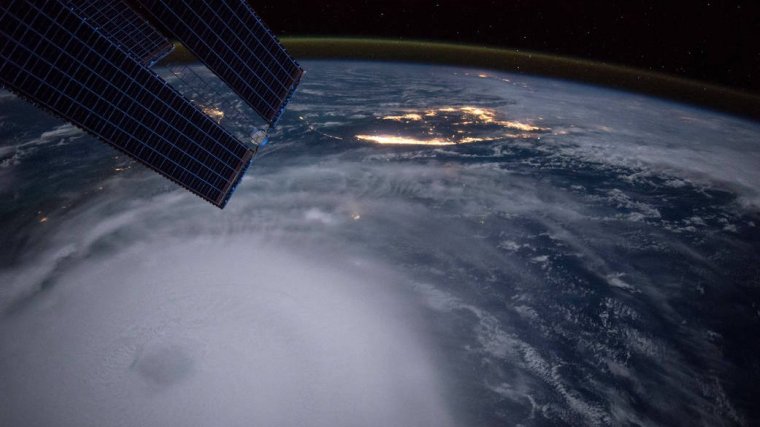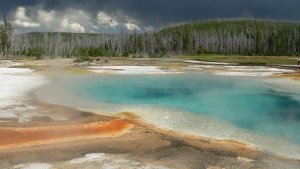| News / Science News |
Hurricane Joaquin From the International Space Station
NASA | OCTOBER 7, 2015
NASA Astronaut Scott Kelly captured this photo on Oct. 2, 2015, from the International Space Station and wrote on Twitter, "Early morning shot of Hurricane Joaquin from space station before reaching Bahamas."

Image Credit: NASA
YOU MAY ALSO LIKE

Scientists have found this year’s Gulf of Mexico dead zone — an area of low to no oxygen that can kill fish and marine life — is, at 6,474 square miles, above average in size and larger than forecast by NOAA in June.

Mysterious objects called brown dwarfs are sometimes called "failed stars." They are too small to fuse hydrogen in their cores, the way most stars do, but also too large to be classified as planets. But a new study suggests they succeed in creating powerful auroral displays, similar to the kind seen around the magnetic poles on Earth.

A new NASA study finds the last remaining section of Antarctica's Larsen B Ice Shelf, which partially collapsed in 2002, is quickly weakening and likely to disintegrate completely before the end of the decade.

A team of University of Utah seismologists has discovered a reservoir of hot, partly molten rock hidden 12 to 28 miles beneath Yellowstone's supervolcano. The pool is over four times larger than a shallower, long-known magma chamber.

Smartphones and other personal electronic devices could, in regions where they are in widespread use, function as early warning systems for large earthquakes, according to newly reported research.

Citizen scientists scanning images from Spitzer Space Telescope, an orbiting infra-red observatory, recently stumbled upon a new class of curiosities that had gone largely unrecognized before: yellow balls.